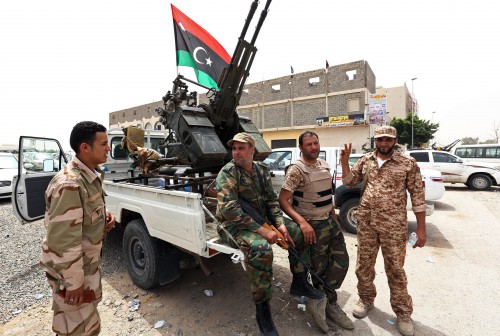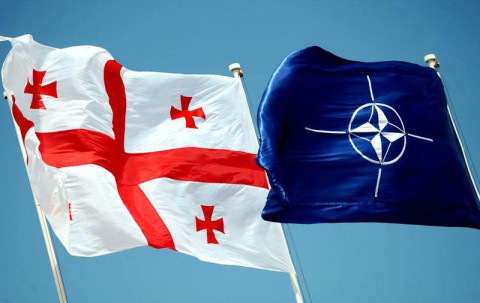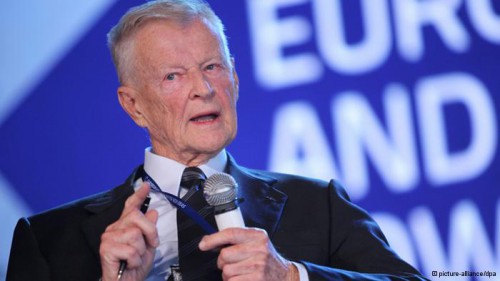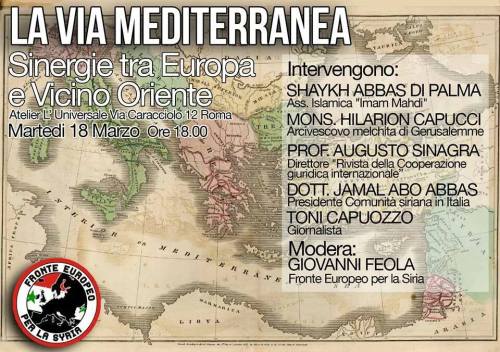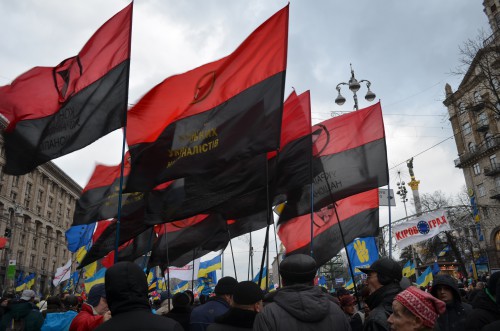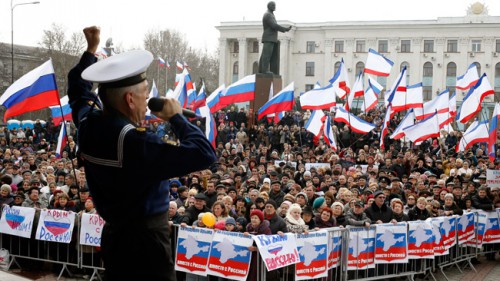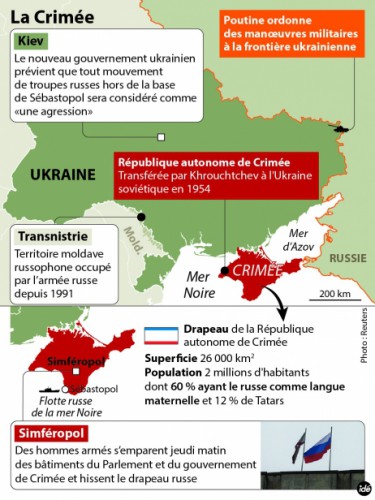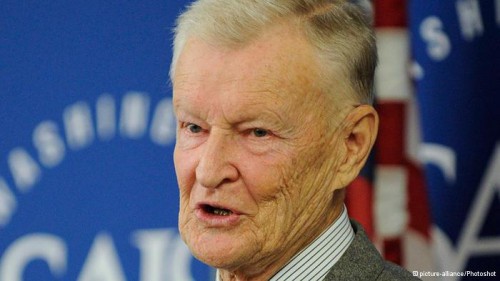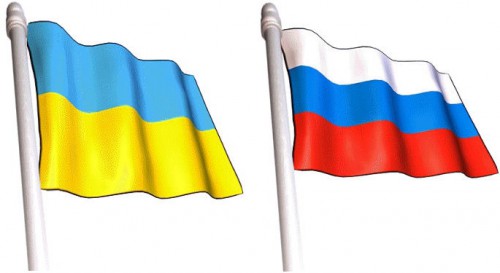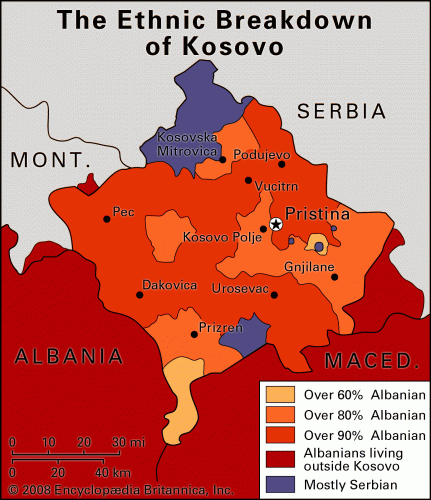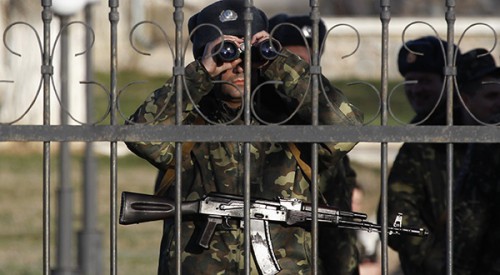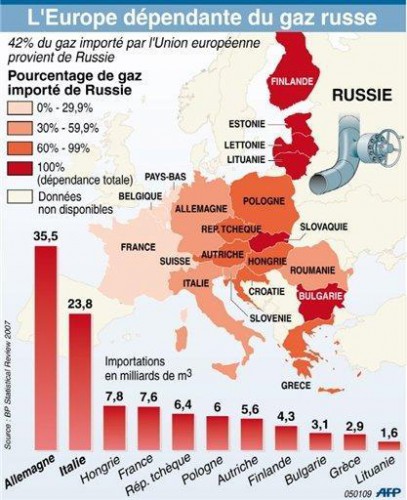In 2009, Poland and Sweden, ever attentive to the US’s geostrategic goals of isolating Russia and gaining control of China thereafter, initiated the Eastern Partnership program, which its sponsors said was intended to tighten ties with former Soviet Republics, such as Moldova, Armenia, Kyrgyzstan, and Ukraine. A trade pact is a part of the Partnership’s Association Agreement (AA) deal.
What the Russians saw in the EU initiative was a repeat of the “NATO Syndrome,” in that what was promised would soon be betrayed, i.e. no NATO expansion in exchange for a Soviet agreement to the reunification of Germany.
To Russian eyes, NATO’s 1999 expansion throughout Eastern Europe and the subsequent celebratory bombing campaign against Serbia, inaugurated just one month later, and the still later Albanian annexation of Serbia’s heartland province of Kosovo, were altogether the Clinton Administration’s triple-combo opening salvos in an American campaign to recreate the Versailles Treaty’s cordon sanitaire. And the 2009 Association Agreement is but a Trojan horse whose only practical purpose is to advance US and EU interests at the expense of the former Soviet republics’ naïve hopes and Russian security.
Dangling the Association Agreement’s implied – but not certain – right of eventual EU membership before the economically struggling former Soviet republics was but a means to beguile them into the EU orbit and thus US control with a future as NATO base hosts and IMF lab rats.
When the terms of the AA are examined, Russian skepticism is understandable. The 350 laws alone that Ukraine would be required to institute over a ten-year period at a cost of twice the nation’s projected GNP in the same time period would overwhelm the struggling country, few of whose industrial and manufacturing products are either wanted or needed in the EU.
But whether or not Ukraine ever managed to fulfill EU conditions for membership would be of no importance to the U.S. Once bound tight with IMF conditions and saddled with World Bank loans and perpetual debt, thereafter the west could leave the AA’s signatories to rot in limbo for years while their territory, cheap labor and resources were put to other, alien purposes.
The Russians saw as well that both the countries of the former Soviet Union and Russia, sandwiched as they are between large geopolitical units (China and the EU,) are disadvantaged when negotiating trade treaties and other matters. Thus was born the idea of a new structure, the Eurasian Union (EAU), which began with the establishment of a Customs Union between Russia, Belarus and Kazakhstan in 2010. The Russian plan was to inaugurate the Eurasian Union in 2015 with the inclusion of Armenia, Kyrgyzstan and Ukraine.
It is the Russian EAU initiative which is said to be Putin’s ham-fisted attempt to re-establish the Soviet empire, and not the plan of a man who accepts the world’s current political configuration and is attempting to place his country within that configuration as advantageously as possible. It’s been a hard sell.
Without Ukraine, a Eurasian Union is at risk of never coalescing usefully, leaving the former republics and Russia vulnerable to neocon and globalist raids and incursions, possibly under cover of staged terrorist events. In effect, the consequences might not be dissimilar from the days when Russian princes were run ragged repelling Tartar incursions from the south or the east, only having to turn and race westerly to beat back Lithuanian or Polish brigands.
By the week of the EU’s Eastern Partnership’s signing debut at the end of November 2013, Vladimir Putin had told Ukrainian president Viktor Yanukovich that he could continue flirting with the EU, if he wished. But if Ukraine wanted a trade agreement with Russia, with whom the lion’s share of Ukraine’s trade actually occurs, $15 billion in the coming year, cut-rate gas prices, industrial co-operation projects, and possible further credits, the country would agree to the EAU. Compared to the $200 million the EU offered out of a total of $799 million for all eight targeted Association Agreement signers and a certain decade in EU cold storage while the country underwent an IMF-directed mauling, Yanukovich made the prudent choice.
When the Ukrainian president informed the EU that Ukraine’s participation in the AA would require further discussion, a reasonable position considering the AA as drafted, and that the country had agreed to the join the EAU, thousands of misguided and confused protestors appeared in the Maidan. Once the terms of the Russian offer were made public, the protests began petering out.
But in both the Russians’ EAU game plan and that of the US’s effort to sabotage the EAU, Ukraine is key. Protest crowds on the Maidan began to grow again amid reports that many in the crowd were working for a daily wage. Whether paid or unpaid, bussed in from Moldova or fresh off the Kiev city tram, it’s certain Ukrainians were not demonstrating for the establishment of NATO bases or IMF agreements, a number of which have already floundered and failed.
Recent events are not the first time the US has used Ukraine in an attempt to displace Russia as a significant power by piercing its sphere of influence.
In 2004, Putin and then Prime Minister Viktor Yanukovich had begun to tackle the politicized supply structure Stalin created to make permanent the Soviet Union. By changing national borders and spreading key industrial components over two or more republics, Stalin bound the Soviet empire together. When the 15 constituent republics that made up the Soviet Union became independent nations in 1992, this cross-border supply structure created havoc.
Mighty Soviet aluminum smelters were located in Siberia, but supplies of bauxite were to be had only in Ukraine. A component an electronics manufacturer in Kharkiv needed could only be obtained from a manufacturer in Vilnius. Multiplying the complications for obtaining key inputs throughout the industrial and manufacturing sectors of 15 nascent and bankrupt governments gives a fuller understanding of why the former republics have failed to successfully restructure their national economies.
Putin’s and Yanukovich’s initial efforts were beneficial, particularly to eastern Ukraine, in which the republic’s industrial sector is concentrated. In 2004, Ukraine experienced a 12% increase in GNP, and the national currency, the hryvnia, enjoyed a modest appreciation.
The US-sponsored 2004 Orange Revolution put paid to the Putin-Yanukovich initiatives, and the Ukrainian cycle of state officials’ theft and oligarchical favoritism began anew under US-presidential pick Viktor Yushchenko, a recent tradition of sorts which Yanukovich was eager to honor, as well.
Fast forward to 21 February 2014, the day of the Yanukovich government’s violent ouster. Earlier that day, Germany, France and Poland had brokered a compromise agreement between the elected Ukrainian government and the protestors’ spokesmen. Having already agreed and executed much of the protestors’ agenda, the pre-2004 Ukrainian constitution was to be restored and Yanukovich, in turn, would stay in the diminished office of the presidency until new elections could be organized.
Within 12 hours of the agreement’s signing, dozens of corpses of demonstrators and police killed by sniper fire were reported in the Maidan. On Saturday, in an un-constitutional procedure the Ukrainian parliament impeached Yanukovich, who then fled to Russia in fear of his life.
The Russian Foreign Ministry Russian Foreign Ministry observed that the Friday agreement was used “with the tacit consent of its external sponsors” as a “cover to promote the script of a forced change of power in Ukraine.” In other words, the Russians smelled a high-stakes trick.
Now that the Ashton-Paet tape has leaked, and despite its being obediently ignored by the mainstream media, one wonders what other actions the west may have known about, but left unremarked on that Friday. Did the EU negotiators know that the opposition they were then championing in accordance with US preferences had possibly directed snipers into the Maidan to murder demonstrators and policemen alike?
Russian warnings to the US and the EU about the rough crowd in Kiev they’d taken up with were ignored. An arrogant Washington, in accord with a famous Leninism regarding the expediency of temporary alliances, sees no problem. Once Ukrainian hotheads and thugs have been bled of all possible utility, they will be eliminated. Think Egypt.
In response to the coup, Moscow swiftly drew a red line so bright it might as well have been flashing in neon: within a day of Yanukovich’s shambolic impeachment 150,000 Russian soldiers were engaged in military exercises not so very far from Russia’s border with eastern Ukraine, almost overnight Crimea was under Russian military control, a bottled-up Ukrainian navy was registering little alarm at their predicament, and further payments on the remaining $12 billion of the $15 billion cash infusion and cut-rate prices for Russian gas Putin had earlier agreed with the overturned Yanukovich government were shelved.
What the US and the EU immediately claimed was a Russian invasion of Ukraine was a long term leaseholder’s defense of its property right. Even with 16,000 troops in Ukraine, Russia is not in violation of the terms of its lease on the Sevastopol naval base. The lease, a treaty in fact, permits the stationing and multiple movements on Crimean territory of as many as 25,000 Russian troops.
The west’s claim of a Russian invasion of Crimea is intended to support Ukrainian control of the Kerch Strait, a waterway at the northern end of the Black Sea which separates Ukraine’s Crimea Peninsula from the coast of Southern Russia and is one of Ukraine’s three potentially oil-producing provinces. Gas reserves lie offshore of the peninsula.
The US believes Ukraine’s long term needs for energy and income can be satisfied by cutting deals with Big Oil to drill for oil and gas, which can then be shipped through Ukrainian pipelines to the EU, and Europe’s dependence on Russian gas a forgotten inconvenience.
Complicating western media scripts, the Crimean parliament voted on 6 March to rejoin the Russian Federation. A public referendum on Sunday, 16 March, confirmed the parliament’s earlier vote and the 96.7% of the electorate that voted its approval tallies with a 93.2% approval when the same question was put to the electorate in a 1991 referendum. In the run-up to the recent public vote, 1000s-strong pro-Russian demonstrations erupted in the eastern Ukrainian cities of Donetsk and Lugansk at which possibly western mercenaries hired by wealthy Ukrainian oligarchs played the role of spoilers.
Without foreign largesse, the new Ukrainian coup government can’t even pay the nation’s light bill much less a single Ukrainian soldier’s combat pay. In fact, the cost of tidying up a Ukraine that has been criminally misgoverned for over two decades in order to accommodate EU standards and procedures is in the neighborhood of a $200 billion, years-long taxpayer liability.
To date, the US has pledged $1 billion and the EU is planning a $1.5 billion emergency transfer to tide the coup government over prior to an IMF agreement and all before the 25 May elections. Within a week of their elevation-by-mob, interim government leaders embarked on a palms-out Grande Tour of sorts. A combined sum of $35 billion in promised IMF loans is now the west’s opening bid.
US policy achievements on behalf of American taxpayers for their $5 billion investment to date: State Department-approved Ukrainian coup government officials have asked for money to finance an “independent Ukraine,” the US and the EU have offered up a promise of $35 billion to insure an “independent Ukraine,” and an “independent Ukraine” has agreed to take the money.
Where are the Pravy Sektor defaulters when you need them? Hmm?
Over the horizon lies a propaganda campaign devoted to browbeating at least some of the Ukrainians’ requested billions from Russia’s earlier deal with the Yanukovich government on what will be said to be a “humanitarian” basis. Rather like the ancient practice of the condemned paying the executioner’s fee, it will be an effort to maneuver Russia into paying the initial costs of Ukraine’s first steps towards EU membership.
When the Ukrainian people understand that the price for daydreams of strolling the Champs d’Elysées with a pocketful of euros is an IMF restructuring that entails the devaluation of the hryvnia, cuts in pensions, benefits and salaries to state employees, raising of the retirement age, the removal of subsidies to coal and other underperforming industries, the growth of natural gas prices, and other toxic rules and conditions that will translate into a life harder and colder than it now is, more turmoil is guaranteed.
Turmoil is the very aim of contemporary US statecraft. In the “divide and rule” political schemata of empire, US blunders are but new opportunities to tighten the screws on what the US policymakers regard not as nations, but as subject territories.
What is extraordinary is that EU officials are persisting in the attempt to squeeze agreement with the IMF and to the Eastern Partnership from Ukraine’s coup government prior to the 25 May elections, and thereby secure their agents’ permanent presence in the country as a thing done. The EU rush speaks to the insincerity and weakness of any substantial EU commitment to aid Ukraine or her people.
The Russians’ refusal to recognize the coup government is correct; doing so would only work to support the inevitable US effort to trade a Ukrainian agreement to the AA to Russia in return for Ukraine’s acceptance of the loss of Crimea.
In the wake of the Crimean referendum, a hysterical western and specifically US-aligned media has been shouting warnings of a sudden Russian grab for eastern Ukraine. Stalin could have written the script – for the Americans, who without any foreign influence whatsoever long ago established their own history of provoking attacks.
Confused overnight media reports of the death of a Ukrainian soldier in Crimea, which imply that Russian troops are responsible, but which locals say was a tragic consequence of a dust-up with Crimean self-defense forces and an unknown sniper, are indicative of the Russians’ concern that the west will create the evidence that compels Putin to make good his promises of protection of Russians in western Ukraine.
Russian Foreign Minister Sergei Lavrov said that Russian support for an OSCE observer mission in Ukraine is based on the need “of preventing provocations by ultranationalist and radical forces against Russian speakers and our compatriots in southeastern Ukraine and other regions.”
Contrary to western media’s repeated provocations, Russia has no interest in a divided Ukraine. A divided country would only open Russia to endless enmity from western Ukrainians, and ongoing cross-border violence. A division would be a tragedy for western Ukraine, which would bring increased economic misery and leave the country subject to a possible Polish annexation.
In truth, US scheming and bellicosity in Ukraine have only worked to drag the world back to the tired rhetoric of the cold war and to that era’s nuclear dangers and destructive tit-for-tat policies of economic sanctions, asset freezes, and boycotts. The only bit of “new” is the threat of kicking Russia out of the irrelevant G-8’s treehouse.
The experience is rather like watching dinosaurs crashing about in a Steven Spielberg film.
The world is de-centralizing, and neither the rapidly changing times nor the world’s finances favor out-of-date multinational organizations, run-a-muck central banks, or rolling superpower seditions and military aggressions.
If so, then what explains Germany’s support of the US lead? Since Russia supplies a third of the gas for Germany’s economy, risking Russia’s alienation seems unwise.
The cat western media doesn’t let out of the bag is the fact that Germany has a full tank of gas, and there’s plenty more from where that came from.
Gazprom’s Baltic Sea ‘Nord Stream’ project is complete and is now transporting Russian gas to Germany through a pipeline that transverses the bottom of the Baltic Sea, and the pipe’s capacity is double the amount of gas Germany purchased from Russia in 2012. Since 2005, the chairman of the supervisory board of the management company of Nord Stream is Gerhard Shröder, the former German chancellor.
Gazprom in conjunction with Italy, France and Germany is building a second pipe, South Stream. The former SPD mayor of Hamburg, Henning Voscherau, plays the same supervisory role at South Stream Transport AG as Shröder does at Nord Stream.
Interestingly, the Financial Times reported that the City’s skittishness in the wake of John Kerry’s idiotic ultimatum to Putin to renounce in advance the results of the referendum in Crimea put ‘half a dozen live deals to fund some of Russia’s biggest companies” in limbo.” But the FT article highlighted one deal that was not put in limbo: “South Stream announced that it had signed a contract worth about EUR2 billion with Saipem of Italy to build the offshore stretch of the route under the Black Sea from Russia to Bulgaria. Construction is scheduled to start in June.”
Gazprom CEO Alexei Miller has been quoted as saying that the two projects in combination with the already-existing Belorussian “Beltansgaz” pipe would turn Ukraine’s network of gas pipelines and biggest strategic asset into “scrap.”
In other words, Germany’s verbal support for the west’s initiatives costs Germany exactly nothing. Any actions beyond the symbolic would cost Germany. Therefore, there will be no EU sanctions of consequence. Even were Germany on side for a US-decreed suicide mission, twenty-eight nations’ governments are not going to agree to economic policies that will take the cost out of their own hides. In other words, no State Department neo-con princess is going to ‘’F**k the EU.”
With the Nord and South stream projects in hand, Germany, which has prospered mightily from the euro, but whose taxpayers are weary of bankrolling the sinking Mediterranean countries’ loans made by the prosperous north’s banks, has positioned itself remarkably well; in an EU financial pile-up, exiting the EU wouldn’t amount to much more than a fender bender.
Now that west has adopted Bolshevik political tools, the Russians ought to keep turning the tables and counter with what the west advocates only with words, i.e. freedom and economic competition.
An EAU based on free trade in which there are no tariffs, no quotas, and no favoritism by or for any member and which allowed for associate members would put the Soviet boogieman back in the closet. A free trade pact would allow Russia and the former republics to reap the benefits of the spontaneous order that the world’s people are building daily on the internet without any state’s direction or even much of an awareness of what they are doing.
There would be costs to Russia for such an arrangement, and a subsidized energy program for certain former republics would have to be included initially, (and would be difficult to retire when no longer needed.) But those initial costs would be less than the long term ones of state-managed trade agreements at which literally thousands of government lawyers and bureaucrats labor continually in order to first design and then police the treaties, which protect and favor individual nation’s corporate political funders at consumers’ expense.
An unhindered market-driven trade block would quickly rationalize the last vestiges of Stalin’s cross-border supply system at no cost to the Kremlin. Endemic corruption would diminish since no bribes need be paid for permissions no longer required. Overall, commerce and enterprise would be favored throughout the EAU.
A trade apparatus in which competing private entities provide reliable and efficient transport, short and intermediate term trade finance, goods insurance, and rapid dispute resolution in private courts would work to swell EAU membership rolls. An EAU supportive of co-operative and unfettered trade would draw foreign investment, and new applicants for membership both within and outside of the CIS (Commonwealth of Independent States).
Would Russia ever initiate such a system?
The Russian love of everything big rather than the small and the quick argues against. An unfortunate predilection towards monopoly, a modern manifestation of the legacy of the votchina structure of property rights established in the ancient Kievian state of ‘Rus, also posits a no. Ditto the exhaustively detailed agreements covering every right and every duty between contracting parties. These elements all boil down to, for instance, Gazprom’s cultural and business preference for signing a single, complex, multi-year contract with Germany’s Ruhrgas, and not many agreements with a plethora of independent suppliers.
Still, the west would be wrong to write off the possibility of having to compete with a lean and mean EAU trade block. Russia has demonstrated a capability for surprise.
After all, who would have thought in 2001 that the president of the Russian Federation, Vladimir Putin, would liberate the greatest number of people on the planet?
“Say what!?” you ask.
If any reader knows of another leader of a major power, who instituted a flat tax of 13% or less, and thereby liberated his people from the necessity of burdensome record keeping and government tracking, while eliminating from households’ budgets the grievous costs of accountants, tax lawyers, offshore scams, and sparing everyday life the social costs inherent in a society riven by the divisiveness that comes of progressive taxation, then, dear reader, please do email me that name.
_____________________________________________________________
Kto kogo? was one of Vladimir Lenin’s favorite expressions. Literally, the phrase means “Who of whom,” and is perhaps best translated as “Who will triumph (over whom)?” The ‘g’ in kogo is pronounced as a ‘v’.





 del.icio.us
del.icio.us
 Digg
Digg
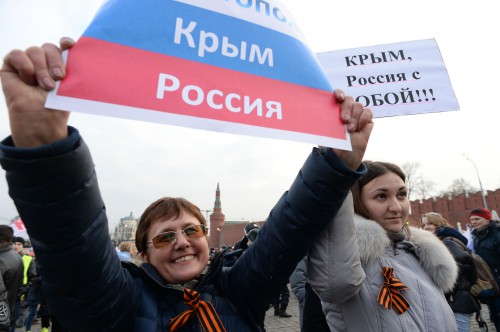
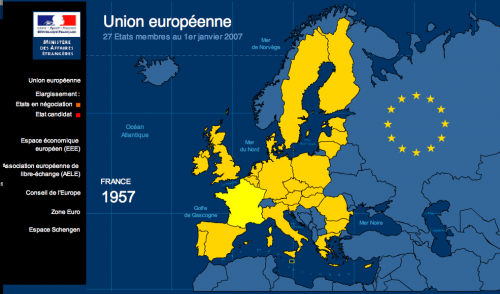

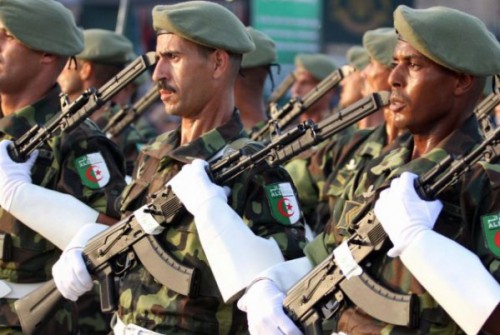
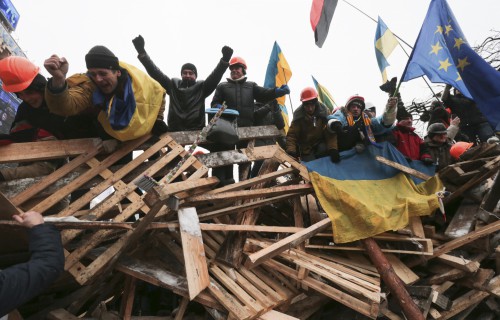
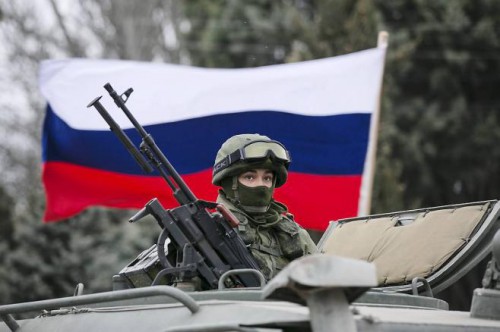
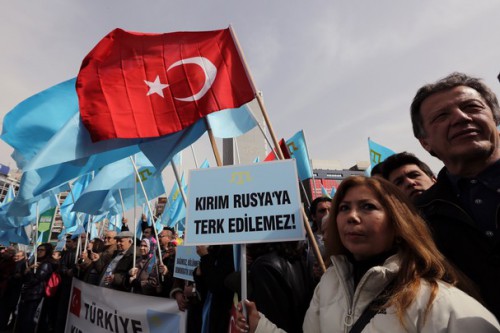

 Er ging davon aus, dass unter anderem die Rohstoffreserven der Weltinsel es ermöglichen würden, von dort aus alle anderen Länder zu beherrschen, also solcher in kontinentaler Randlage und langfristig auch den amerikanischen Kontinent, Japan und Australien. Für Mackinder ist damit die Beherrschung des Kernlandes Eurasien der Schlüssel zur Weltmacht. In Deutschland fand seine Theorie so gut wie keine Rezeption und sein
Er ging davon aus, dass unter anderem die Rohstoffreserven der Weltinsel es ermöglichen würden, von dort aus alle anderen Länder zu beherrschen, also solcher in kontinentaler Randlage und langfristig auch den amerikanischen Kontinent, Japan und Australien. Für Mackinder ist damit die Beherrschung des Kernlandes Eurasien der Schlüssel zur Weltmacht. In Deutschland fand seine Theorie so gut wie keine Rezeption und sein 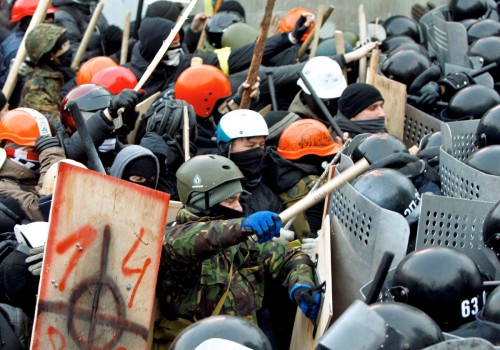
 Hier, au mépris du droit international et du simple droit commercial, il a menacé la Russie d'une non livraison des deux BPC de type Mistral presque achevés à Saint Nazaire, et déjà payés par les Russes. Il condamne ce faisant toute coopération militaire avec la Russie, renvoyant des milliers de travailleurs français au chômage.
Hier, au mépris du droit international et du simple droit commercial, il a menacé la Russie d'une non livraison des deux BPC de type Mistral presque achevés à Saint Nazaire, et déjà payés par les Russes. Il condamne ce faisant toute coopération militaire avec la Russie, renvoyant des milliers de travailleurs français au chômage. 